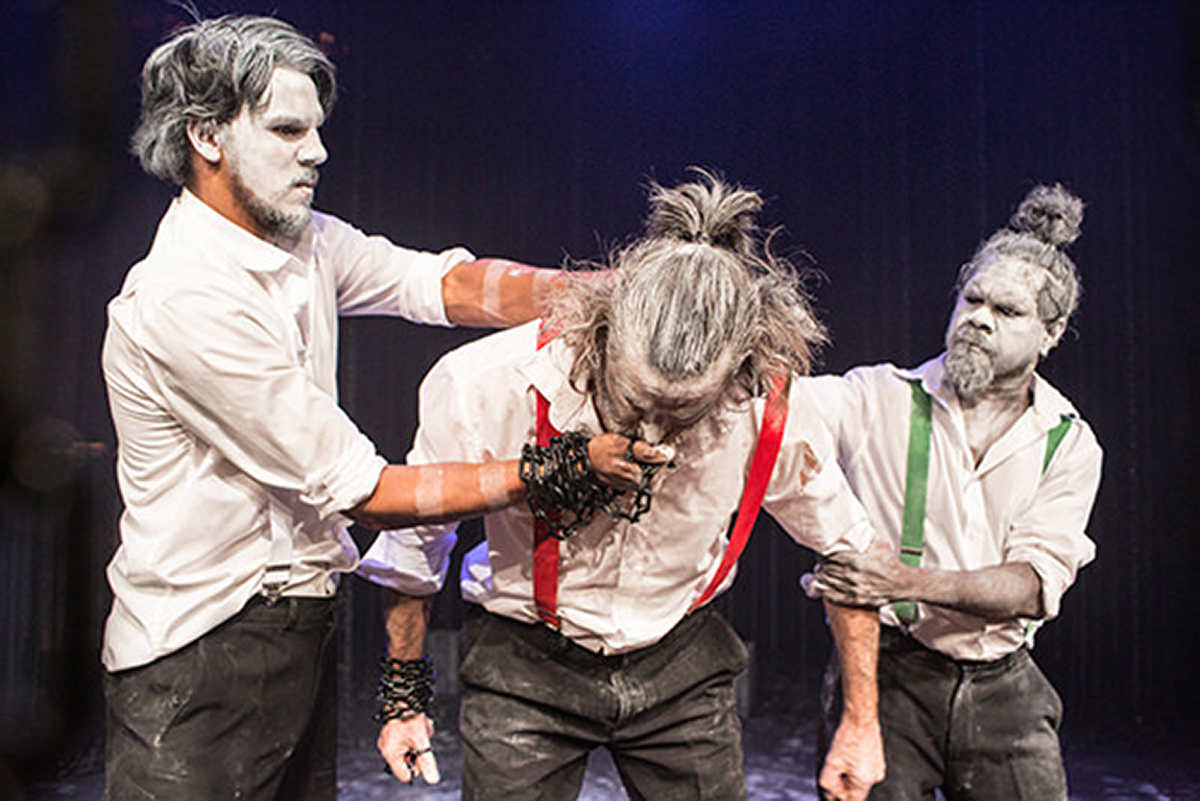
Welcoming the challenge of the new
I contributed to RealTime Australia from 1998 up to the present, with a dip in contributions while I worked in New Zealand, 2009-15. Looking back over my involvement, I am struck by the diversity of work, style and material which both I and the magazine encompassed. While RealTime had stylistic trends, there was a notable period where meditations on one’s personal psychophysical response as an audience member were common though I myself only rarely embraced such an approach (as in RT 35 in 2000).
The magazine was a Catholic church. As such, it offered myself and others opportunities to not only author close-study, expert reviews, but also to regularly tackle the near impossible writing challenge of drawing together in one thematically-linked article six or so disparate works within, for example, the Melbourne Festival, or of the last two months of dance in Perth, all in less than 1,800 words! I also had the opportunity to write occasional features and opinion pieces. These longer works arose less as editor-led commissions and more out of what I, as a contributor, thought might be useful to add to arts discussion in Australia. Because of this, those pieces were very important for me, typically coming out of major developments in my own career as a critic and arts researcher.
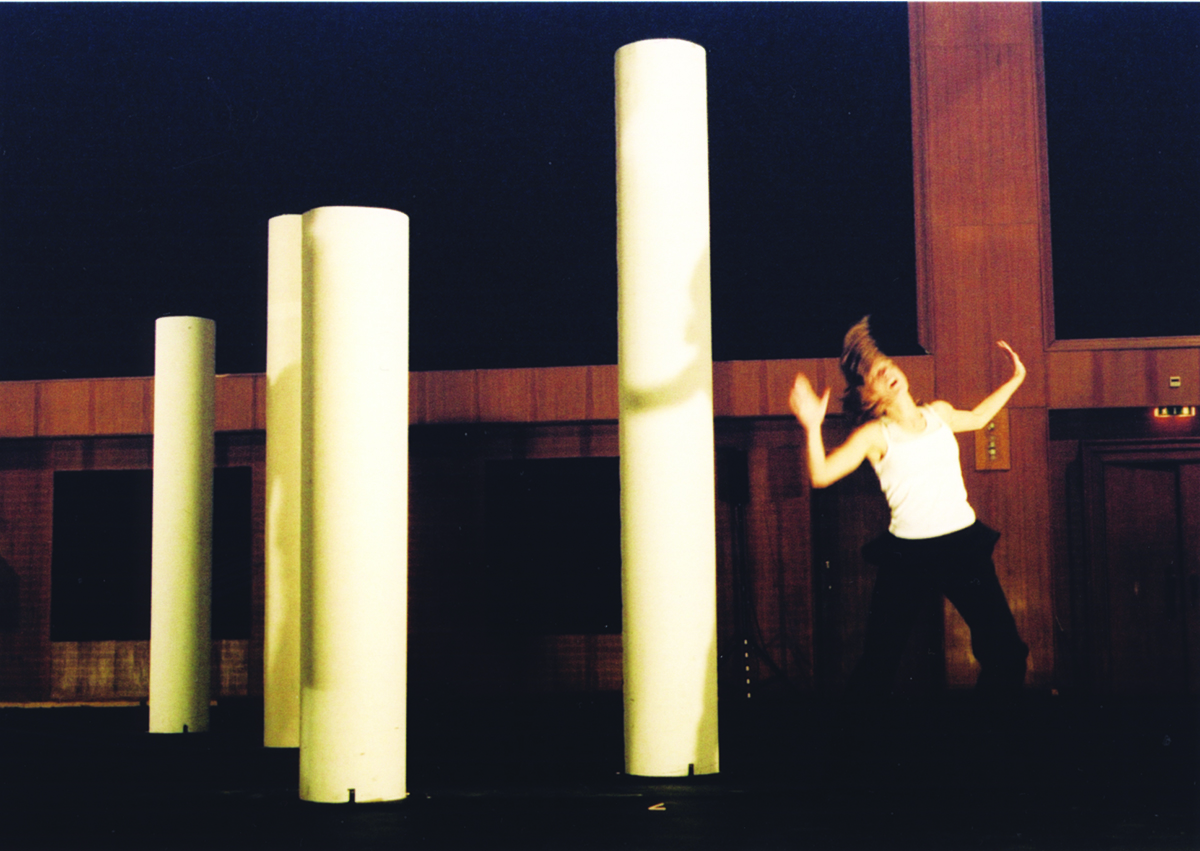
Massacre, Not Yet, It’s Difficult
My 2004 trip to Japan, for example, my increasing investment in the DIY noise art culture of South Island New Zealand, or my 2003 trip alongside the members of the performance company Not Yet, It’s Difficult to the Vienna Festival; all led me to significant philosophical developments in my own viewing of performance.
Because of this tendency for my work in RealTime to function more as a form of dialogue, than as definitive statements, I have in retrospect noticed that quite a number of the shows which I remember best today were not in fact the ones I actually wrote about directly myself. Rather these productions tend to be ones for which I knew the reviewers, or the artists — often because I had covered their work elsewhere (most notably in the Melbourne street press, specifically IN Press Magazine, for which I authored material 1992-98).
Looking back now therefore, it seems to me that while the reviews that I and others wrote for RealTime provide an indispensable archive on the performing arts in Australia, I have always thought that what we were contributing to was principally more of a contingent, multi-directional conversation — rather than these pieces functioning as definitive records as such. Through my work as a critic, I met and spoke with a range of artists, many of whom I am still in correspondence with today, and quite a number of whom are now friends. My academic work dovetails closely with these relationships and with those thoughts which I developed through my involvement in RealTime. All of this led me — and probably some of the artists I encountered —to where we are today. This might be related to the rather opaque relationship RealTime had with its readership. It was never an academic magazine, but it was not an entirely non-academic one either. A great many of its writers (myself included) had worked within the university sector. I have always hoped that my work would be read by deeply interested laypeople, though not necessarily the general public per se. RealTime’s house style was not typically an “easy read”; closer perhaps to Laurie Anderson’s wonderful championing of the “difficult listening hour” in art music. I always felt therefore that RealTime was principally addressed to those who followed the arts closely, those who had already decided that they needed to know what the next cutting edge dance piece, or challenging sound installation, might be. Consequently, many of these readers were in fact the artists themselves, and this is often what made writing for RealTime — and indeed my ongoing arts criticism in Limelight and Seesaw magazines — so exciting and rewarding. One felt part of an often fractious and certainly opinionated, but wonderfully interactive, community of individuals who were collectively engaged in a complex series of debates and exchanges regarding the nature of Australian culture and its place in the world. While the vital contribution RealTime makes in the present to this important project now proceeds via a an historiographic encounter, rather than directly commenting upon the now we currently inhabit, it is no less important today.
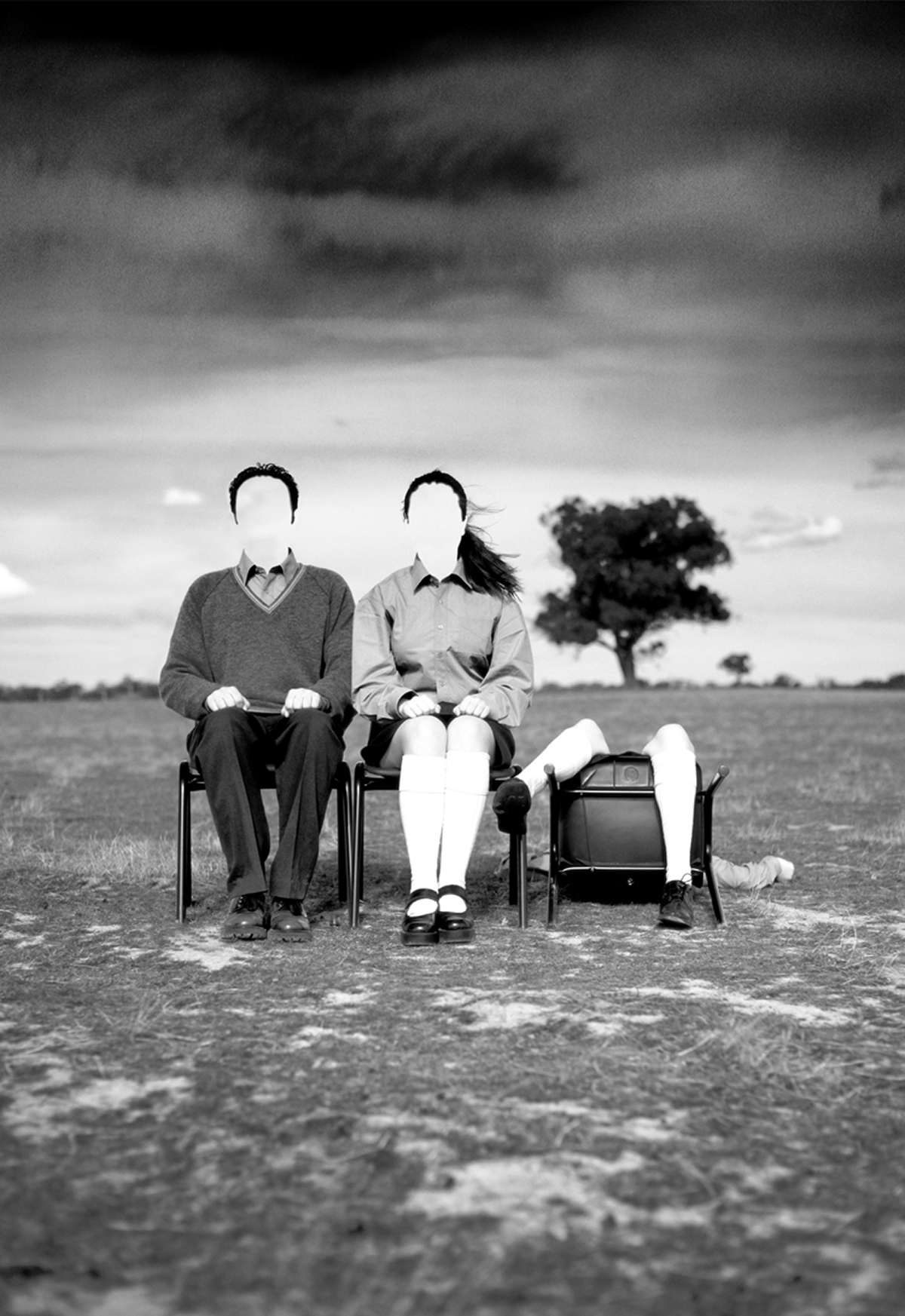
Falling Petals, Ben Ellis, promotional image Jeff Busby
FAVOURITE & PROBLEMATIC WORKS/EVENTS
Ben Ellis, Falling Petals, 2003
An important part of RealTime’s function has been to cover that which then still powerful mainstream media did not, or to provide added depth to such coverage where the major daily newspapers were either unable or unwilling because of editorial constraints. Ellis’ remarkable play Falling Petals (see my review), together with his earlier piece Post Felicity (2002), were savaged by several major critics as too nasty and too unlikely. How could people really behave this way? Surely drama needs “relatable” characters? This was shortly after the Children Overboard incident (so well dramatised in Version 1.0’s A Certain Maritime Incident), which had many in theatre calling for the “great Australian play” that would deal with the topic of refugee rights and loss of liberty due to anti-terrorism legislation — failing to note the obvious contradiction of writing a “great play” about something so hateful, complex and over-determined as the decline of political empathy in a nation beset by fears of outsiders, disease, a potential drop in the balance of trade and other issues.
The quality of the play that I strove to capture in this piece (which I still think reads well today) is that illogic, contradiction and a blasé approach to the rise of hate and self-interest, which not only lay at the heart of this play, but at the centre of the new Australian malaise we had all come to live with at that time (and still do today). Within Ellis’s insightful, dark vision, a country town and its school leavers are thrown on the pyre of political and economic expediency and no one really cares. The production also featured one of the most fabulously Surreal scenes in Australian theatre, where the doctor treating the strange disease which emerges within the school is himself turned into a giant walking vagina, cruelly and erotically sensitive to all he had previously striven to deal with in an objective, distanced fashion. It is only the unscrupulous protagonist who survives. Who knows, maybe he went on to become prime minister?
Ben Ellis’s play therefore not only turned a wickedly distorting carnival-house mirror onto the Australian cultural and political scene, but also challenged me in how to respond, how to sum up its manifold contradictions and its deftly handled conflation of horror cinema and Australian domestic drama. In the end, I chose to go with the rage which I felt the piece epitomised, the angry, violent sense that something horrible is ripping through my country and no one can stop it. I’m not sure things have changed that much since.
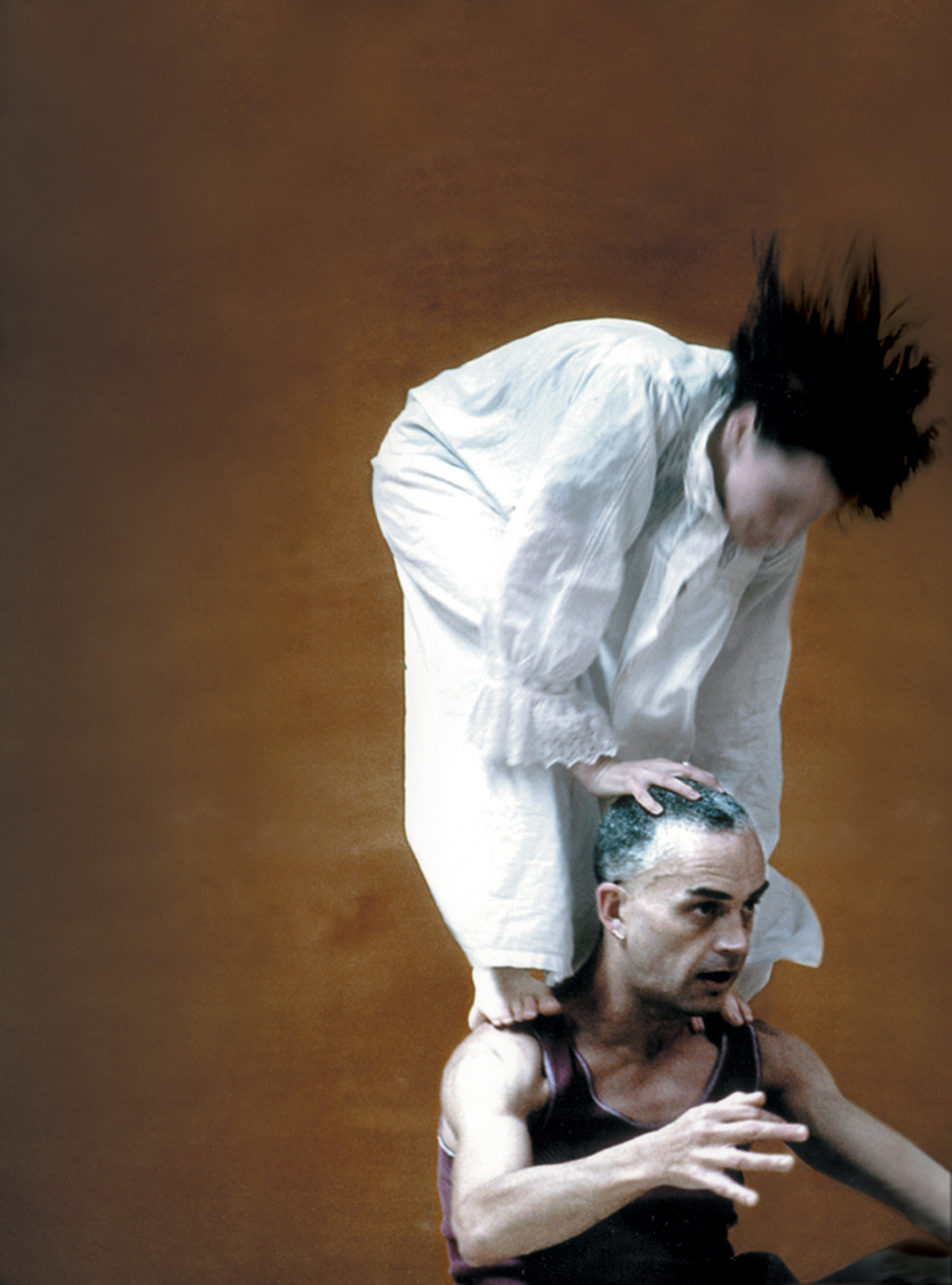
Michelle Heaven, Brian Lucas, Tense Dave, Chunky Move, photo Anthony Scibelli
2003 Melbourne International Art Festival dance program
In 2003 I reviewed the Melbourne International Arts Festival program, which included works by Gideon Obarzanek’s Chunky Move, Sandra Parker, Tony Yap and Yumi Umiumare. I have been privileged to be on hand during several important developments in dance in Australia. In Perth I saw exciting early works from Aimee Smith (now no longer making dance), Paea Leach, and Olivia Millard, while in Melbourne I witnessed the evolution of Lucy Guerin, Ros Warby, Phillip Adams and Rebecca Hilton after they renewed their Australian careers with the landmark mixed bill of Return Ticket, reviewed by Zsuzsanna Soboslay.
Helen Herbertson‘s fabulous productions became more installation-based and episodic, swimming within designer Ben Cobham’s great swathes of blackened space and punctuated by indistinct penumbral realms into which bodies infiltrated themselves (Descansos, Delirium, Morphia). Gideon Obarzanek’s Chunky Move came to Melbourne. Shelley Lasica staged her truly jaw-dropping and inordinately thoughtful Situation studies, reviewed by Philipa Rothfield, while Yumi Umiumare and Tony Yap — both together and in isolation — emerged as leaders of a multicultural, multiethnic Australian post-butoh movement. I reviewed works by Umiumare and Yap here, here, and here. See also John Bailey’s review of Umiumare’s DasSHOKU Hora!.
And then there was Sandra Parker. Sandy’s choreography immediately sat apart from those I list above, despite the fact that she, Shelley, Lucy and Gideon would all come to choreograph on some of the same dancers. Sandy’s work was usually more lyrical and curvilinear — although her choreography certainly had spikey moments of rapid, harsh shifts and aggressive folds. In retrospect, I wonder if it was more overtly feminine somehow (though I admit this only makes sense according to a rather conventional model of gendered antitheses). More significantly, the wider reception of Parker’s work always had a certain coolness to it. She had the unenviable task of replacing Herbertson at the helm of Danceworks at the point that the company’s financial status and home venue were in question, and Sandra’s own work was very different from Helen’s. Nor did her practice quite fit into the rising trend of bony articulations, together with highly muscular and virtuosic movement, which characterised the artists in Return Ticket as well as the rising force of Chunky Move. Sandy’s work just didn’t seem very postmodern, or even post-postmodern either. But it was still extremely good.
The article I have chosen here therefore draws together this rather disparate range of trends within Melbourne dance to examine one of Gideon’s most dramaturgically challenging works with Chunky Move, Tense Dave (co-choreographed and directed with Lucy Guerin and Michael Kantor), as well as briefly analysing the astonishingly intimate and nuanced collaborative work Yumi and Tony were doing at that time. But my article also highlights one of Parker’s masterful and to my mind still insufficiently appreciated works, Symptomatic. While I still consider In Absentia (evocatively performed in the now vanished industrial venue of Melbourne’s Economiser building) together with In the Heart of the Eye to be Parker’s masterworks, what challenged me about Symptomatic was the fusion of earlier physical concerns within an increasingly opaque yet still compelling dramaturgy — in this sense thematically far closer to Chunky Move’s Tense Dave than I had anticipated, even though the actual movement of the two pieces had almost nothing in common.
Symptomatic is an unusually aggressive work in Parker’s canon, providing compelling evidence of how she and the others I have cited above often suddenly produce something one did not expect (I recently saw Attractor, the wonderful piece from Lucy, Gideon and Indonesian musician Senyawa, featuring Dance North, in the 2018 Perth Festival, and I’m still struggling to reconcile its chaotic choreographic pulses with the cool formalism which previously characterised Guerin’s work. The idea of choreographers striving to develop with a singular, characteristic physical style could perhaps have faded today.
Symptomatic may not have fully resolved the ancient problem of how to suggest drama and emotion in movement without explicitly stating it in words. Symptomatic nevertheless retained an austere and evocatively unsympathetic mode of execution in its sound-and-movement configurations which paradoxically was quite moving. As I noted earlier, the best art is not in fact about producing gleaming, well-oiled machines which tell us little that we do not already know. Rather it should pose unresolved questions and promote interactions between audiences and others. My festival review captures to some extent this exciting and at times slightly fervid set of still-evolving exchanges, while also emphasising and paying homage to a dance-maker whom I for one would like to see more of today.
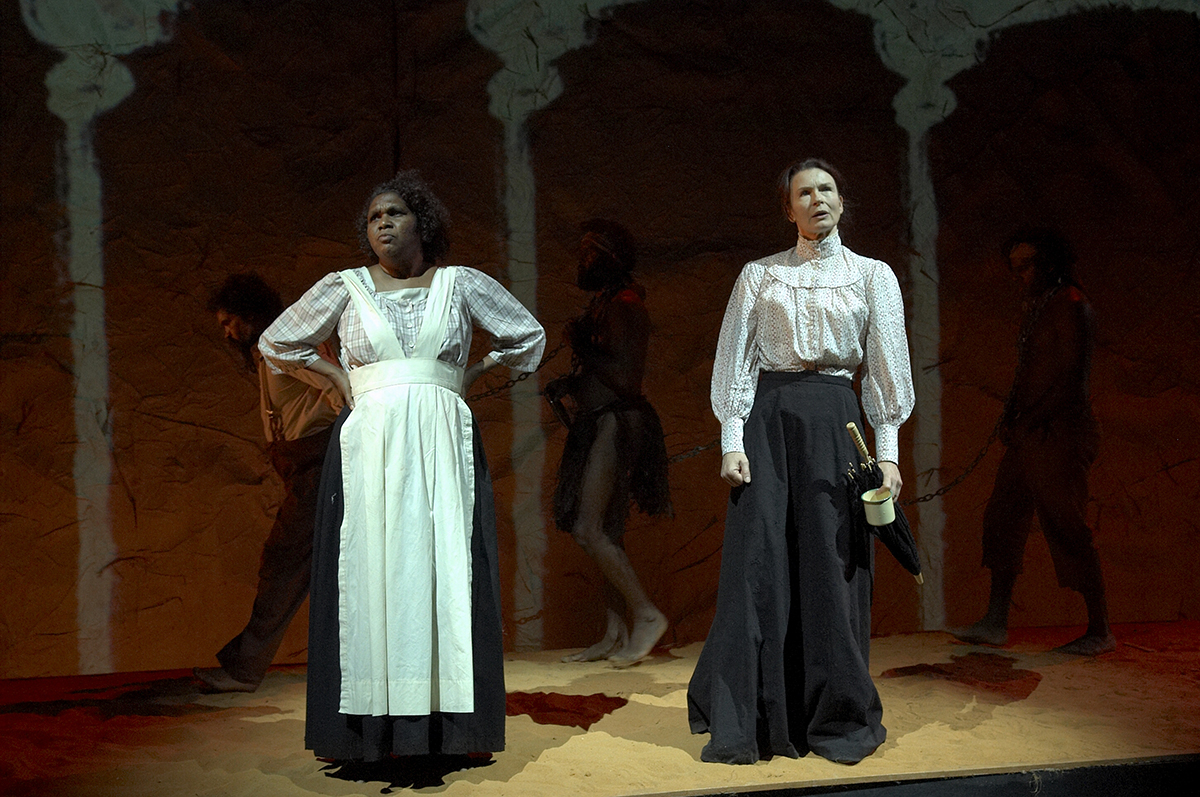
Jandamarra, 2008, Ningali Lawford, Margaret Mills, Kelton Pell, Tony Briggs, Jimi Bani, Yirra Yaakin Theatre Company, photo Gary Marsh
Learning from WA
Any meditation on my association with RealTime must acknowledge the profoundly personal, formative influence of my move from Melbourne to Perth in 2004. What I learned from this was that almost no one, not even many of our artistic peers on the eastern seaboard, really gave a damn what happened out West, just so long as we kept digging things up out of the ground and providing Australia with a good balance of payments. I discovered that I too was woefully ignorant of West Australian arts, history and culture.
With the generous assistance of peers and institutions like Cat Hope and her then new Decibel group, sound archivist Rob Muir), Tos Mahoney and Tura New Music, as well as seeing shows from Yirra Yaakin — an often underrated group of warriors on the cutting edge of Indigenous theatre in Australia (see reviews here, here and here) — I learned more about what it means to be in Australia, and what the arts may or may not add to that conversation, than I had ever known before. On the sandy grounds of Whadjuk Noongar country, art at times seems like an absolute necessity, a great, drunken, celebratory mace with which to dong the counteracting forces of isolation, economic rationalism, and of neglect. But refined art can also sometimes seem like an imposition, a horrible grotesque trick pulled on a land which even today is steeped in blood and death (West Australia still leads the nation in Indigenous deaths in custody).
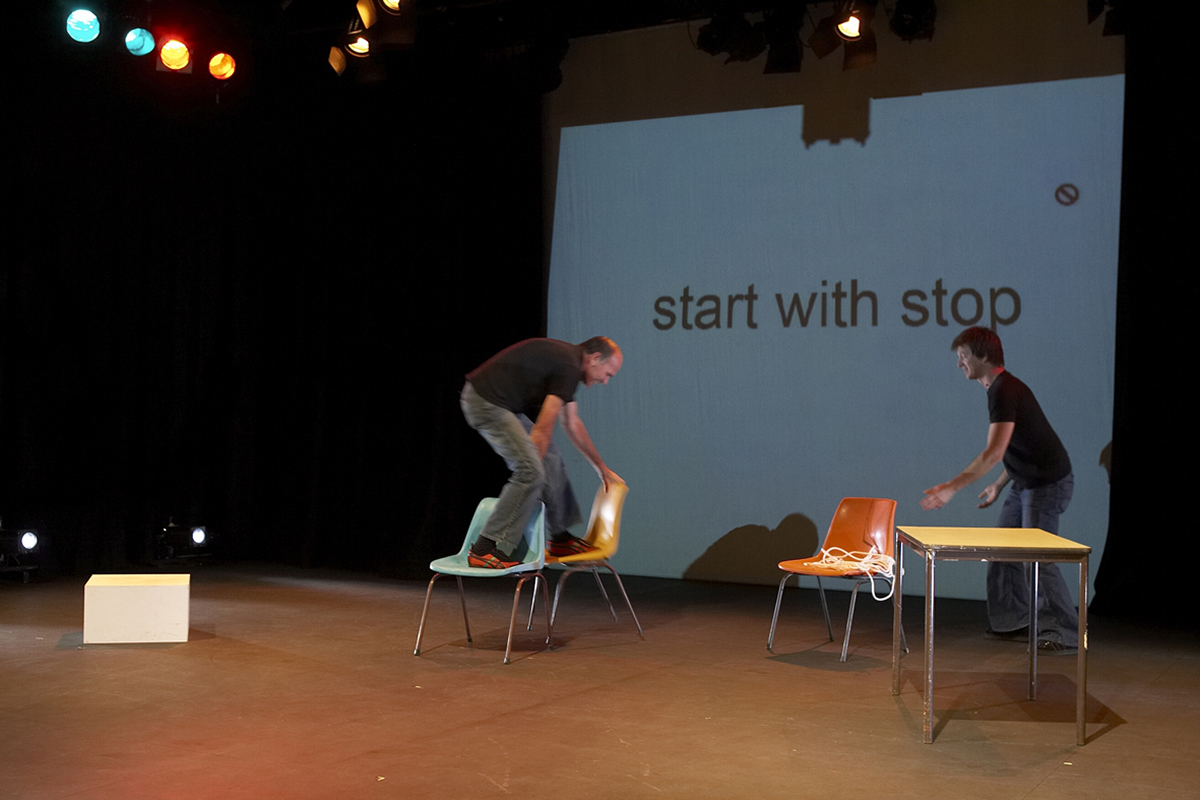
Clyde McGill, Mark Parfitt, Instruction Action Space, Putting on an Act, PICA, 2006
Putting on an Act
While it might seem paradoxical to include a review of Putting on an Act, a program I never really liked, it seems to me to aptly sum up the profound unease mixed with a sense of community and celebration which I came to feel in Perth, and which Australia as a whole might learn from. The focus is the then annual Putting On an Act season run by the Perth Institute of Contemporary Arts, 1994-2009. While PICA vetted applications from the artists asking to be programmed, the evening was essentially uncurated, and hence would always include some pretty dire works-in-progress. Yet it is of course precisely within such a context that one can come across some of the most striking and amazingly novel inventions, those works which challenge, and which only RealTime tended to report on.
I had never before encountered Clyde McGill or Mark Parfitt, and at first glance their simple set-up of slides of instructions which competed with near simultaneous voice-over instructions seems unremarkable. But the wonderful everyday comedy, the realism (a phrase I normally hate) of their reactions, the way in which it sent up the ever-popular idea of the “instruction-based artwork,” while producing a glorious cacophony of improvised responses and failed attempts to satisfy the dictatorial offstage force (a metaphor for government?), still resonates with me today. Although I could not discuss Abe Sade’s bass noise segment of that evening in the review because of a conflict of interest (the chief architect of that work, Cat Hope worked with me at WAAPA) this tumultuous improvised contribution was also fabulous (even better though was Cat’s collaboration with Chris Cobilis in 2008). For all its faults, the program did offer a great snapshot of interesting WA artists and some of their more quirky, one-off outputs. For that, I still cherish this review today.
–
Top image credit: So Long Suckers, performers: Emmanuel James Brown, Peter Docker, Ian Wilkes, Yirra Yaakin Theatre Company, photo Simon Pynt






